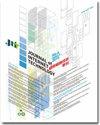Vehicles Positioning in Tunnel: A Real-Time Localization System Using DL-TDOA Technology
IF 1.2
4区 计算机科学
Q4 COMPUTER SCIENCE, INFORMATION SYSTEMS
引用次数: 0
Abstract
Due to the dim light in the tunnel and the characteristics of natural electromagnetic shielding, drivers are prone to accidents in the tunnel and are unable to inform the navigation system in time. Therefore, it is still a bottleneck in the field of intelligent transportation how to obtain real-time vehicle position information and vehicle state information when the vehicle is running at high speeds in the tunnel. In this paper, a new technology is proposed to achieve accurate real-time positioning in the tunnel scene by combining the downlink time difference of arrival (DL-TDOA) with UWB technology. The DL-TDOA technology is based on Ultra Wide Band (UWB) data transmission technology, which can effectively reduce the interference of other electromagnetic waves and reduce the data transmission time. By calculating the transmission time of the wireless electromagnetic wave between the vehicle and the fixed base station, the technology can determine the real-time position of the vehicle and greatly reduce the time loss of data in transmission. DL-TDOA based on UWB technology has high precision, while DL-TDOA based on UWB technology has many advantages, such as high precision, strong anti-jamming ability, low power consumption and a high transmission rate which are suitable for accurate positioning and navigation in tunnel scenarios. In the final tunnel experiment, several tests were carried out at speeds of 30km/h, 60km/h and 80km/h respectively. By comparing the coordinate position after the conversion with the satellite coordinate, the real-time kinematics (RTK), it was concluded that the position error of vehicles in the tunnel is less than 1m, and the real-time positioning of vehicles in the tunnel is realized.隧道车辆定位:基于DL-TDOA技术的实时定位系统
由于隧道内光线昏暗,且具有自然电磁屏蔽的特点,驾驶员在隧道内容易发生事故,无法及时通知导航系统。因此,当车辆在隧道中高速行驶时,如何获得实时的车辆位置信息和车辆状态信息仍然是智能交通领域的一个瓶颈。本文将下行到达时间差(DL-TDOA)与UWB技术相结合,提出了一种在隧道场景中实现精确实时定位的新技术。DL-TDOA技术基于超宽带(UWB)数据传输技术,可以有效地减少其他电磁波的干扰,缩短数据传输时间。该技术通过计算无线电磁波在车辆和固定基站之间的传输时间,可以确定车辆的实时位置,大大减少传输中数据的时间损失。基于UWB技术的DL-TDOA具有较高的精度,而基于UWB的DL-TDOA具有精度高、抗干扰能力强、功耗低、传输速率高等优点,适用于隧道场景中的精确定位和导航。在最后的隧道试验中,分别以30km/h、60km/h和80km/h的速度进行了几次试验。通过将转换后的坐标位置与卫星坐标实时运动学(RTK)进行比较,得出隧道内车辆位置误差小于1m的结论,实现了隧道内车辆的实时定位。
本文章由计算机程序翻译,如有差异,请以英文原文为准。
求助全文
约1分钟内获得全文
求助全文
来源期刊

Journal of Internet Technology
COMPUTER SCIENCE, INFORMATION SYSTEMS-TELECOMMUNICATIONS
CiteScore
3.20
自引率
18.80%
发文量
112
审稿时长
13.8 months
期刊介绍:
The Journal of Internet Technology accepts original technical articles in all disciplines of Internet Technology & Applications. Manuscripts are submitted for review with the understanding that they have not been published elsewhere.
Topics of interest to JIT include but not limited to:
Broadband Networks
Electronic service systems (Internet, Intranet, Extranet, E-Commerce, E-Business)
Network Management
Network Operating System (NOS)
Intelligent systems engineering
Government or Staff Jobs Computerization
National Information Policy
Multimedia systems
Network Behavior Modeling
Wireless/Satellite Communication
Digital Library
Distance Learning
Internet/WWW Applications
Telecommunication Networks
Security in Networks and Systems
Cloud Computing
Internet of Things (IoT)
IPv6 related topics are especially welcome.
 求助内容:
求助内容: 应助结果提醒方式:
应助结果提醒方式:


